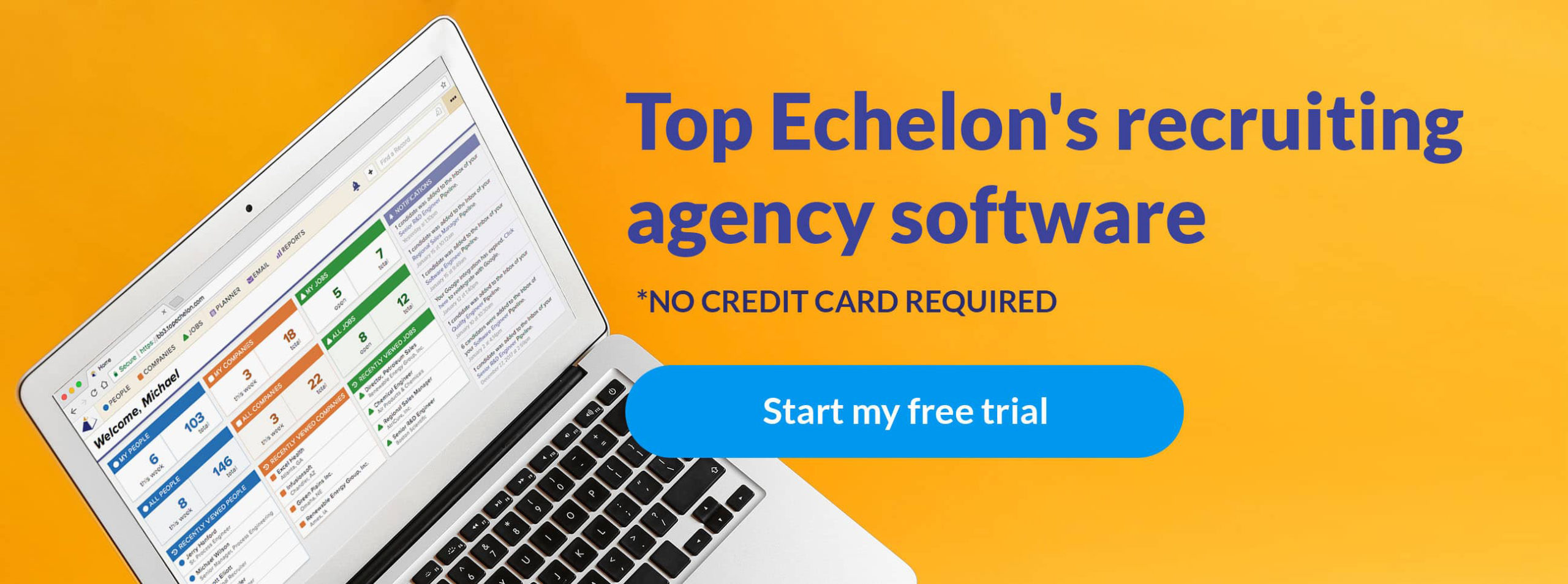Are you running into prospective clients who use a preferred supplier list? If so, you know the frustration that comes with getting turned down right off the bat. But, a preferred supplier list doesn’t mean you can’t gain business. You can use several tactics to get past the gatekeeper and overcome the challenges of a recruitment PSL.
What does PSL stand for in recruitment?
PSL in recruitment stands for preferred supplier list. Companies use preferred supplier lists to choose which recruiters they want to work with. Usually, hiring authorities only accept services from recruiters on the preferred supplier list. If you are not included on a company’s PSL, you may find it difficult to secure work with that company.
The idea behind a preferred supplier list is to create a mutually beneficial agreement. Generally, preferred suppliers are guaranteed business from the company. The company is usually charged a lower recruiting fee for including the recruiter on their PSL.
Preferred supplier lists also have some downsides. The recruiter often receives lower pay than their normal salary. And, the company’s candidate pool is limited to what the preferred supplier provides.
To get on a recruitment PSL, you must enter a preferred supplier agreement (PSA). A preferred supplier agreement in recruitment is an arrangement between a business and recruiter. It is a formal contract that defines the recruiter’s relationship with the company.
The agreement implies that the two parties will work together on an ongoing basis. It includes a time length and is reassessed once the time is up. The business decides to continue working with the recruiter or use another.
The problem with a PSL in recruitment
So, you know what it means when a business has a preferred supplier list. But, what does PSL mean in recruitment for those who are not included on a preferred supplier list?
Securing job orders from businesses that use preferred suppliers can be difficult. A PSL often causes HR departments to disregard recruiters outside of the list.
At first glance, you might feel like you’re wasting time on recruitment business development calls to businesses using PSLs. But, a preferred supplier list doesn’t necessarily mean the end of the road for gaining business.
The problem recruiters have with PSLs lies in their initial conversations with prospects. You can’t address the preferred supplier list as a barrier. Here’s the trick to dealing with PSLs:
- Don’t ask how to become a preferred supplier
- Don’t ask when the PSL is up for renewal
These questions imply that you’re willing to wait a long time to work with the prospect. If you have a short-term need for new clients, try to get around the list rather than on it.
Even if the hiring manager doesn’t realize it, a recruitment PSL isn’t the only option for sourcing candidates. As a recruiter, you can use strategies to help companies see past the PSL and find the talent they could be missing.
The bottom line of any hiring department is that managers want to source top talent. If you have a candidate that outperforms other options, it’s likely that they won’t pass you up because of a PSL.
Preferred supplier list recruitment tips
Try the following tips to overcome PSL in recruitment challenges.
Find out what’s wrong with the company’s current suppliers
Understanding the prospect’s issues with their current recruiting agencies can help you offer solutions. But, getting this information is easier said than done.
Learning the issues that hiring authorities have with preferred suppliers is challenging. People don’t like to talk about their problems. Plus, you are a stranger, so the prospect is more likely to hesitate. When you ask what’s wrong with their current recruiting agencies, you must be strategic.
An unassuming and friendly approach is usually best. Ask how the hiring authority likes the preferred supplier and how they receive candidates. Listen carefully and take note of when they hesitate or downplay details.
Find out which recruiters are on the PSL and why they were chosen. It’s also good to ask what the prospect would change about the recruiter’s services. Avoid pressuring the prospect for answers. The phone call should naturally develop into a telling conversation. From there, you can come up with resolutions.
Be an addition, not a replacement
HR professionals who use a PSL aren’t actively looking to work with new recruiters. Instead of converting a business to your services, be a supplement to its current hiring strategy by working with its recruiting network. Pitch your recruitment efforts as a way to help clients solve human resource issues.
Find out what happens when the company’s preferred suppliers can’t provide qualified candidates. Do they have a plan B? Most likely, they don’t. You can act as their alternative recruiter.
See if the business is having a hard time filling a position. Look at the candidate pool in your applicant tracking system to see if you can source the right talent for the job. Hiring managers want to hire talent, so you could get the job order over the preferred suppliers.
Bring your best players
Landing a job order with a business that uses a preferred supplier list isn’t easy. To win a tough game, you need to use your best players.
When you contact the prospect, present talent that will impress them. Prove that you offer great services by bringing talent to the table early. Ditching the PSL in recruitment is tempting to a hiring authority when you have an interested applicant already lined up.
If possible, don’t contact human resources. Instead, go directly to the manager who wants to fill a vacant position. The manager knows what kind of candidate they need and will work closely with the new hire. Showing the manager quality candidates could spark enough interest to get you in the door.
Point out that their consideration is free
How much recruiters make in profits depends on successful placements. You don’t make money until you place a candidate.
Remind hiring managers that it is free to consider your candidates. Offer to send a few applicants that you think are a good fit. You’re doing a large chunk of the hiring work for no cost, so it could be hard for HR professionals to turn you down.
Keep the conversation with the prospect low-pressure. Be clear that you won’t charge them until a job offer is accepted.
Establish a level of comfort and trust with the hiring manager. Then, let them know they have nothing to lose by considering your candidates. But, passing on the opportunity could cause them to miss out on the best person for the job.









